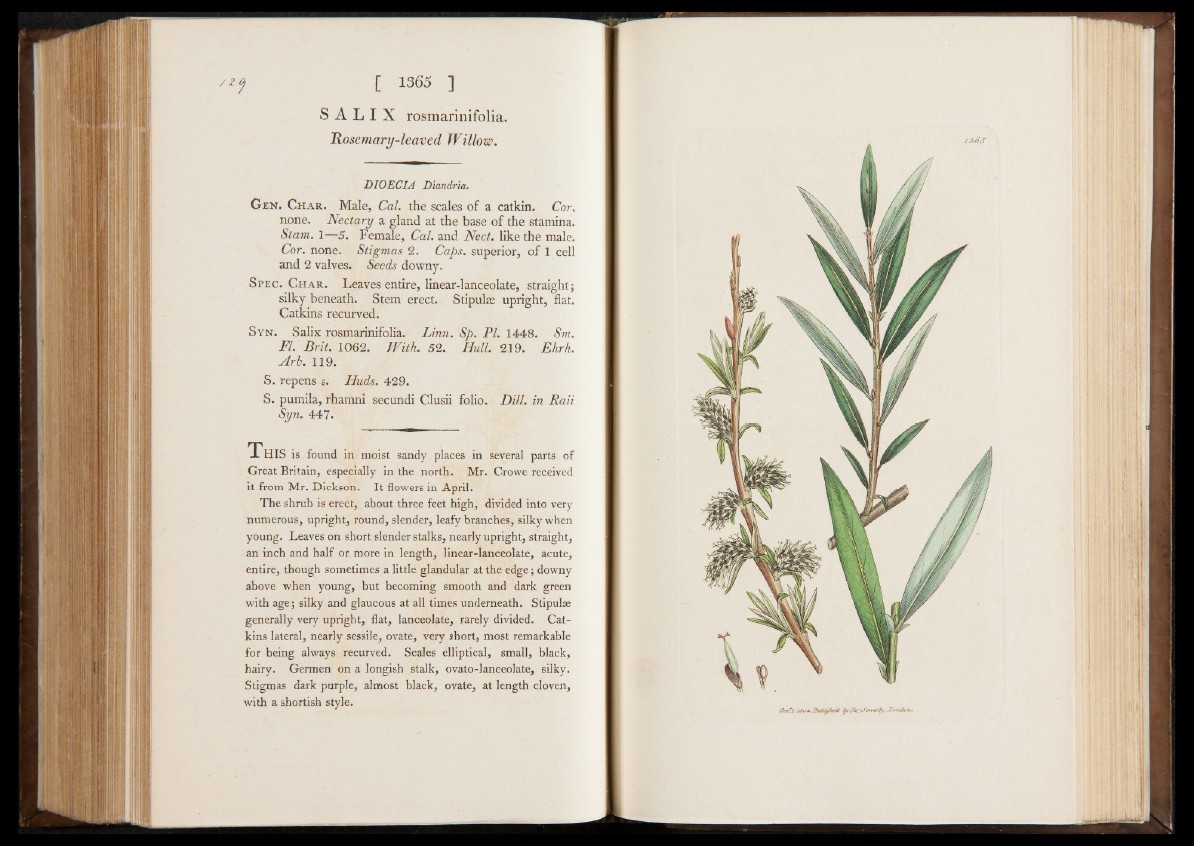
[ 1365 ]
S A L I X rosmarinifolia.
Rosemary-leaved Willow.
/ z y
DIOECIA Diandria.
G e n . C h a r . Male, Cal. the scales of a catkin. Cor,
none. Ne ctary a gland at the base of the stamina.
Siam. 1— 5. Female, Cal. and Nect. like the male.
Cor. none. Stigmas 2. Caps, superior, of 1 cell
and 2 valves. Seeds downy.
S p e c . C h a r . Leaves entire, linear-lanceolate, straight;
silky beneath. Stem erect. Stipulas upright, flat.
Catkins recurved.
S y n . Salix rosmarinifolia. Linn. Sp. PI. 1448. Sm.
FI. Brit. 1062. With. 52. Hull. 219. Ehrh.
Arh. 119.
S. repens s. Huds. 429.
S. pumila, rhamni secundi Clusii folio. Dill, in Raii
Syn. 447.
T h i s is found in moist sandy places in several parts of
Great Britain, especially in the north. Mr. Crowe received
it from Mr. Dickson. It flowers in April.
The shrub is erect, about three feet high, divided into very
numerous, upright, round, slender, leafy branches, silky when
young. Leaves on short slender stalks, nearly upright, straight,
an inch and half or more in length, linear-lanceolate, acute,
entire, though sometimes a little glandular at the edge; downy
above when young, but becoming smooth and dark green
with age; silky and glaucous at all times underneath. Stipulse
generally very upright, flat, lanceolate, rarely divided. Catkins
lateral, nearly sessile, ovate, very short, most remarkable
for being always recurved. Scales elliptical, small, black,
hairy. Germen on a longish stalk, ovato-Ianceolate, silky.
Stigmas dark purple, almost black, ovate, at length cloven,
with a shortish style.